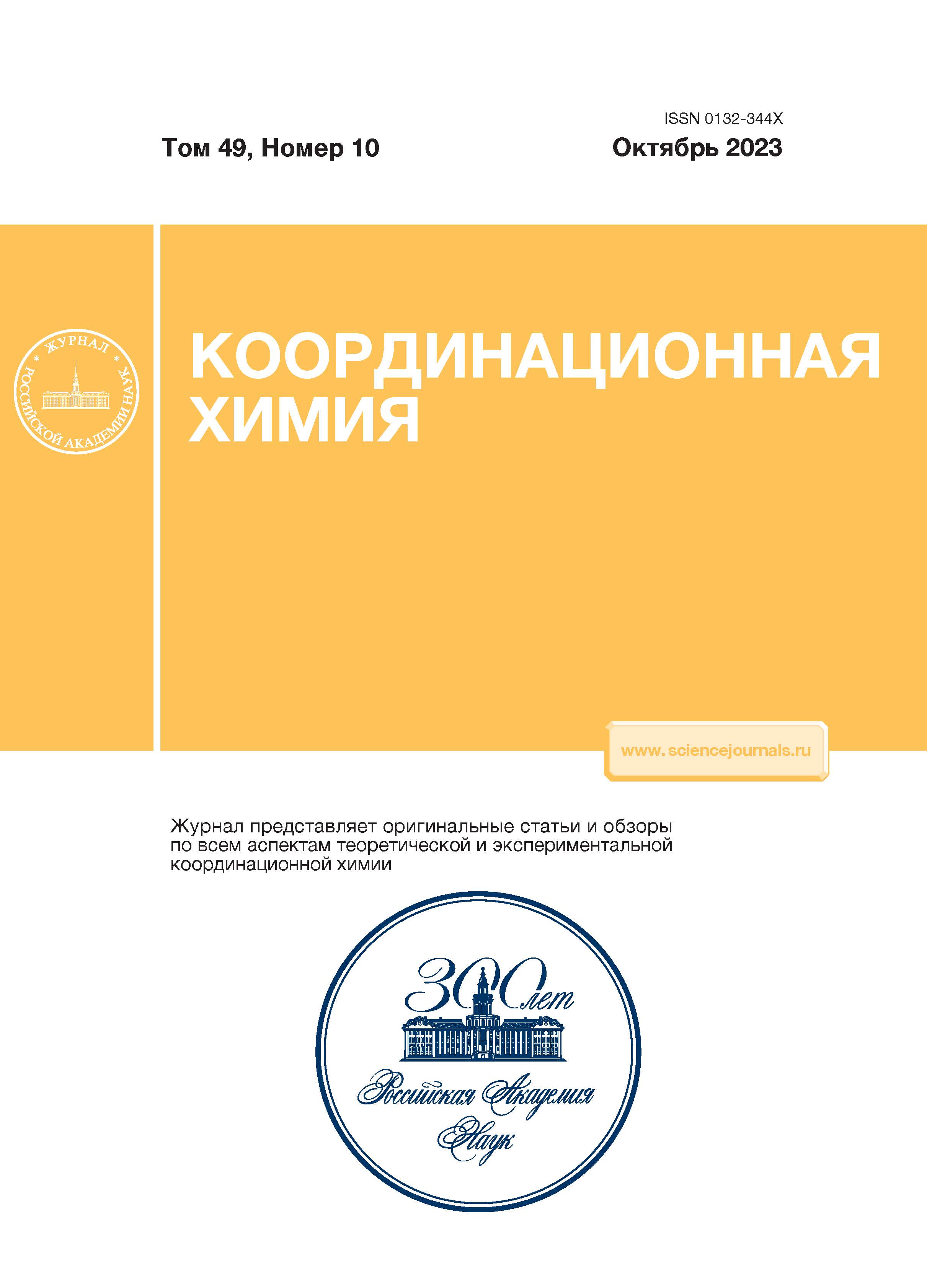Trans-Platinum Complexes with Diclofenac, Aspirin, and 2,6-Di-tert-Butylphenol Fragment: Synthesis and Biological Activity
- 作者: Antonenko T.A.1, Shpakovskii D.B.1, Gracheva Y.A.1, Lysenko K.A.1, Milaeva E.R.1
-
隶属关系:
- Moscow State University, Moscow, Russia
- 期: 卷 49, 编号 10 (2023)
- 页面: 624-631
- 栏目: Articles
- URL: https://cardiosomatics.ru/0132-344X/article/view/667473
- DOI: https://doi.org/10.31857/S0132344X2360025X
- EDN: https://elibrary.ru/NOTTIJ
- ID: 667473
如何引用文章
详细
A series of σ-aryl platinum complexes with the sterically hindered phenol group of the general formula RPt[PPh3]2X (R = 3,5-di-tert-butyl-4-hydroxyphenyl; X = Cl (I), diclofenac (II), aspirin (III), and OOCR (IV)) is synthesized and characterized by 1H, 13C, and 31P NMR spectroscopy, IR spectroscopy, and elemental analysis. The molecular structure of compound I is determined by X-ray diffraction (XRD) (CIF file CCDC no. 2243100). The electron and hydrogen atom transfers are studied by spectrophotometry in the CUPRAC and DPPH tests. Complexes I, II, and IV are active reducing agents of Cu(II). The antioxidant activity is studied as the ability of the compounds to inhibit lipoxygenase (LOX-1B). Compound I is found to be an inhibitor of LOX-1B. The antiproliferative properties of the complexes are studied in vitro on the HCT-116, MCF-7, and A-549 cancer cells and WI-38 normal cells. The synthesized compounds have a lower antiproliferative activity than that of cisplatin.
作者简介
T. Antonenko
Moscow State University, Moscow, Russia
Email: taisiya.antonenko@mail.ru
Россия, Москва
D. Shpakovskii
Moscow State University, Moscow, Russia
Email: taisiya.antonenko@mail.ru
Россия, Москва
Yu. Gracheva
Moscow State University, Moscow, Russia
Email: taisiya.antonenko@mail.ru
Россия, Москва
K. Lysenko
Moscow State University, Moscow, Russia
Email: taisiya.antonenko@mail.ru
Россия, Москва
E. Milaeva
Moscow State University, Moscow, Russia
编辑信件的主要联系方式.
Email: taisiya.antonenko@mail.ru
Россия, Москва
参考
- Guddneppanavar R., Saluta G., Kucera G.L., Bierbach U. // J. Med. Chem. 2014. V. 49. № 11. P. 3204.
- Kelland L.R., Barnard F.G.C., Mellish K.J., Jones M. // Cancer Res. 1994. V. 8. P. 5618.
- Cheng Q., Wang H., Min Y., Wang J. // R. Soc. Chem. 2014. V. 50. P. 7427.
- Hager S., Ackermann C.J., Joerger M. et al. // Annals Oncology. 2016. V. 27. P. 975.
- Intini F.P., Zajac J., Novohradsky V. et al. // Inorg. Chem. 2017. V. 56. № 3. P. 1483.
- Ayoub S.S., Botting R.M., Joshi A.N. et al. // Mol. Cell. Biochem. 2009. V. 327. № 1–2. P. 101.
- D’Autréaux B., Toleda M.B. // Nat. Rev. Mol. Cell Biol. 2007. V. 8. № 10. P. 813.
- Sies H., Berndt C., Jones D.P. // Annu. Rev. Biochem. 2017. V. 86. P. 715.
- Antonenko T.A., Shpakovsky D.B., Vorobyov M.A. et al. // Appl. Organomet. Chem. 2018. V. 32. Art. e4381.
- Antonenko T.A., Gracheva Yu.A., Shpakovsky D.B. et al. // Int. J. Mol. Sci. 2023. V. 24. P. 2024.
- Брауэр Г., Руководство по неорганическому синтезу. М.: Мир, 1986. Т. 5. С. 1814.
- Милаев А.Г., Панов В.Б., Охлобыстин О.Ю. // Журн. общ. химии. 1981. Т. 51. № 12. С. 2715.
- Malatesta L., Cariello C. // J. Chem. Soc. 1958. № 6. P. 2323.
- Milaeva E.R., Rubezhov A.Z., Prokoph’ev A.I., Okhlobystin O.Yu. // J. Organomet. Chem. 1980. V. 188. № 3. P. C43.
- Krause L., Herbst-Irmer R., Sheldrick G.M., Stalke D. // J. Appl. Crystallogr. 2015. V. 48. P. 3.
- Sheldrick G.M. // Acta Crystallogr. A. 2015. V. 71. P. 3.
- Sheldrick G.M. // Acta Crystallogr. C. 2015. V. 71. P. 3.
- Apak R., Guglu K., Ozyurek M., Karademir S. // J. Agric. Food Chem. 2004. V. 52. P. 7970.
- Brand-Williams W., Cuvelier M. E., Berset C. // Food Sci. Technol. 1995. V. 28. P. 25.
- Ozturk I., Filimonova S., Hadjikakou S.K. // Inorg. Chem. 2010. № 7. P. 488.
- Niks M., Otto M. // J. Immunol. Methods. 1990. V. 130. № 1. P. 149.
- Ustafa M.O. // Agric. Food Chem. 2004. V. 52. P. 7970.











